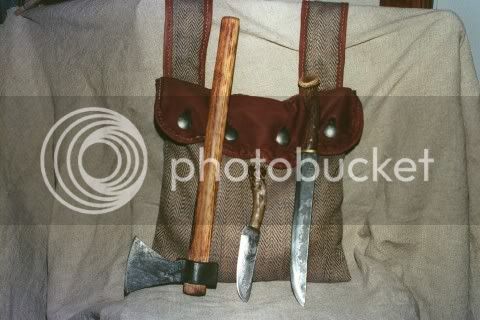I would like to try my hand at making a patch knife. What is your opinion on what the ideal patch knife should be as far as handle material, steel type and blade shape. I would also like to know how and where your carry your rig.
Now if you dont want to spend a lot of time typing maybe a picture would say it all. :thumbsup:
Any help and guidance would be appreciated.
Thanks
Joe Yanta
Now if you dont want to spend a lot of time typing maybe a picture would say it all. :thumbsup:
Any help and guidance would be appreciated.
Thanks
Joe Yanta










